Dennis Wei
Highlight All the Phrases: Enhancing LLM Transparency through Visual Factuality Indicators
Aug 09, 2025Abstract:Large language models (LLMs) are susceptible to generating inaccurate or false information, often referred to as "hallucinations" or "confabulations." While several technical advancements have been made to detect hallucinated content by assessing the factuality of the model's responses, there is still limited research on how to effectively communicate this information to users. To address this gap, we conducted two scenario-based experiments with a total of 208 participants to systematically compare the effects of various design strategies for communicating factuality scores by assessing participants' ratings of trust, ease in validating response accuracy, and preference. Our findings reveal that participants preferred and trusted a design in which all phrases within a response were color-coded based on factuality scores. Participants also found it easier to validate accuracy of the response in this style compared to a baseline with no style applied. Our study offers practical design guidelines for LLM application developers and designers, aimed at calibrating user trust, aligning with user preferences, and enhancing users' ability to scrutinize LLM outputs.
Reasoning Model Unlearning: Forgetting Traces, Not Just Answers, While Preserving Reasoning Skills
Jun 15, 2025Abstract:Recent advances in large reasoning models (LRMs) have enabled strong chain-of-thought (CoT) generation through test-time computation. While these multi-step reasoning capabilities represent a major milestone in language model performance, they also introduce new safety risks. In this work, we present the first systematic study to revisit the problem of machine unlearning in the context of LRMs. Machine unlearning refers to the process of removing the influence of sensitive, harmful, or undesired data or knowledge from a trained model without full retraining. We show that conventional unlearning algorithms, originally designed for non-reasoning models, are inadequate for LRMs. In particular, even when final answers are successfully erased, sensitive information often persists within the intermediate reasoning steps, i.e., CoT trajectories. To address this challenge, we extend conventional unlearning and propose Reasoning-aware Representation Misdirection for Unlearning ($R^2MU$), a novel method that effectively suppresses sensitive reasoning traces and prevents the generation of associated final answers, while preserving the model's reasoning ability. Our experiments demonstrate that $R^2MU$ significantly reduces sensitive information leakage within reasoning traces and achieves strong performance across both safety and reasoning benchmarks, evaluated on state-of-the-art models such as DeepSeek-R1-Distill-LLaMA-8B and DeepSeek-R1-Distill-Qwen-14B.
CoFrNets: Interpretable Neural Architecture Inspired by Continued Fractions
Jun 05, 2025Abstract:In recent years there has been a considerable amount of research on local post hoc explanations for neural networks. However, work on building interpretable neural architectures has been relatively sparse. In this paper, we present a novel neural architecture, CoFrNet, inspired by the form of continued fractions which are known to have many attractive properties in number theory, such as fast convergence of approximations to real numbers. We show that CoFrNets can be efficiently trained as well as interpreted leveraging their particular functional form. Moreover, we prove that such architectures are universal approximators based on a proof strategy that is different than the typical strategy used to prove universal approximation results for neural networks based on infinite width (or depth), which is likely to be of independent interest. We experiment on nonlinear synthetic functions and are able to accurately model as well as estimate feature attributions and even higher order terms in some cases, which is a testament to the representational power as well as interpretability of such architectures. To further showcase the power of CoFrNets, we experiment on seven real datasets spanning tabular, text and image modalities, and show that they are either comparable or significantly better than other interpretable models and multilayer perceptrons, sometimes approaching the accuracies of state-of-the-art models.
Final-Model-Only Data Attribution with a Unifying View of Gradient-Based Methods
Dec 05, 2024



Abstract:Training data attribution (TDA) is the task of attributing model behavior to elements in the training data. This paper draws attention to the common setting where one has access only to the final trained model, and not the training algorithm or intermediate information from training. To serve as a gold standard for TDA in this "final-model-only" setting, we propose further training, with appropriate adjustment and averaging, to measure the sensitivity of the given model to training instances. We then unify existing gradient-based methods for TDA by showing that they all approximate the further training gold standard in different ways. We investigate empirically the quality of these gradient-based approximations to further training, for tabular, image, and text datasets and models. We find that the approximation quality of first-order methods is sometimes high but decays with the amount of further training. In contrast, the approximations given by influence function methods are more stable but surprisingly lower in quality.
Identifying Sub-networks in Neural Networks via Functionally Similar Representations
Oct 21, 2024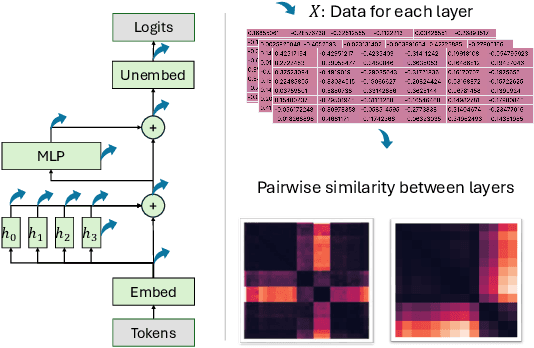

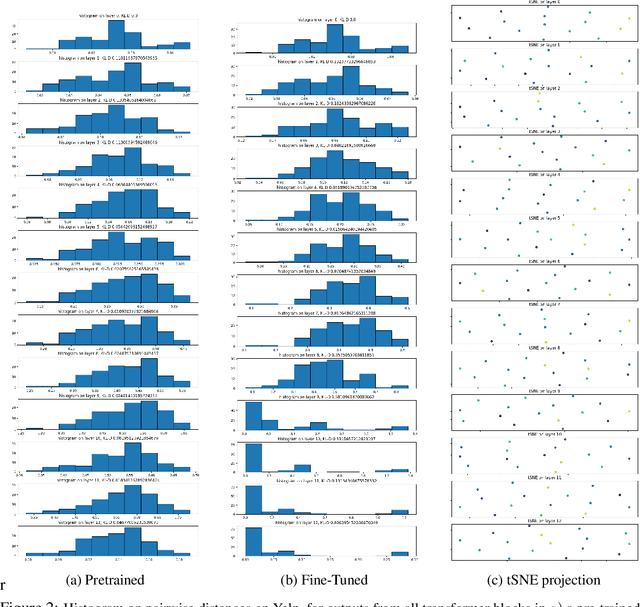

Abstract:Mechanistic interpretability aims to provide human-understandable insights into the inner workings of neural network models by examining their internals. Existing approaches typically require significant manual effort and prior knowledge, with strategies tailored to specific tasks. In this work, we take a step toward automating the understanding of the network by investigating the existence of distinct sub-networks. Specifically, we explore a novel automated and task-agnostic approach based on the notion of functionally similar representations within neural networks, reducing the need for human intervention. Our method identifies similar and dissimilar layers in the network, revealing potential sub-components. We achieve this by proposing, for the first time to our knowledge, the use of Gromov-Wasserstein distance, which overcomes challenges posed by varying distributions and dimensionalities across intermediate representations, issues that complicate direct layer-to-layer comparisons. Through experiments on algebraic and language tasks, we observe the emergence of sub-groups within neural network layers corresponding to functional abstractions. Additionally, we find that different training strategies influence the positioning of these sub-groups. Our approach offers meaningful insights into the behavior of neural networks with minimal human and computational cost.
Split, Unlearn, Merge: Leveraging Data Attributes for More Effective Unlearning in LLMs
Jun 17, 2024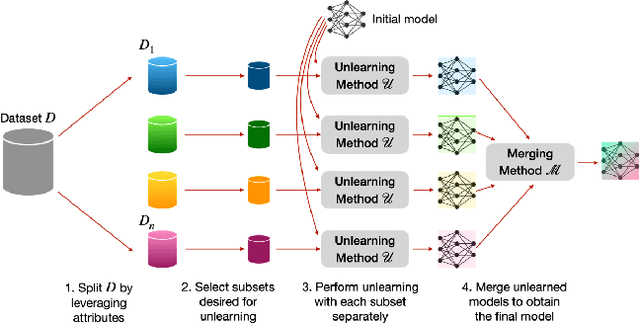
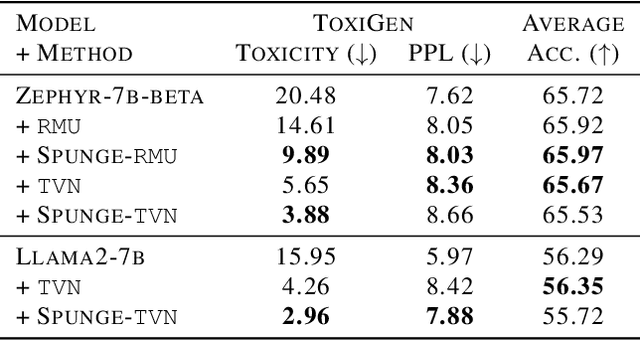

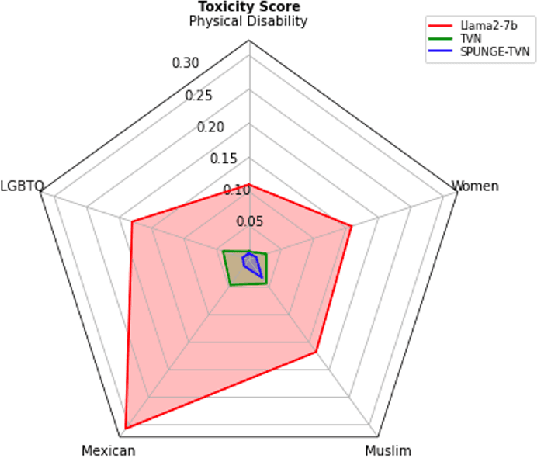
Abstract:Large language models (LLMs) have shown to pose social and ethical risks such as generating toxic language or facilitating malicious use of hazardous knowledge. Machine unlearning is a promising approach to improve LLM safety by directly removing harmful behaviors and knowledge. In this paper, we propose "SPlit, UNlearn, MerGE" (SPUNGE), a framework that can be used with any unlearning method to amplify its effectiveness. SPUNGE leverages data attributes during unlearning by splitting unlearning data into subsets based on specific attribute values, unlearning each subset separately, and merging the unlearned models. We empirically demonstrate that SPUNGE significantly improves the performance of two recent unlearning methods on state-of-the-art LLMs while maintaining their general capabilities on standard academic benchmarks.
Interventional Causal Discovery in a Mixture of DAGs
Jun 12, 2024

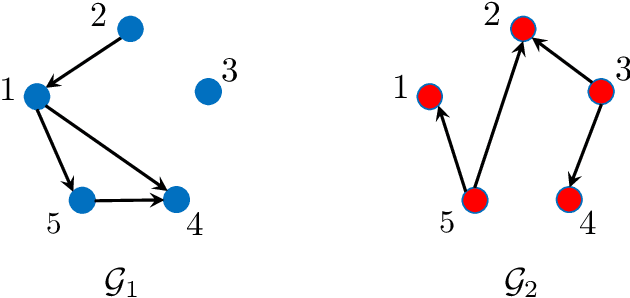
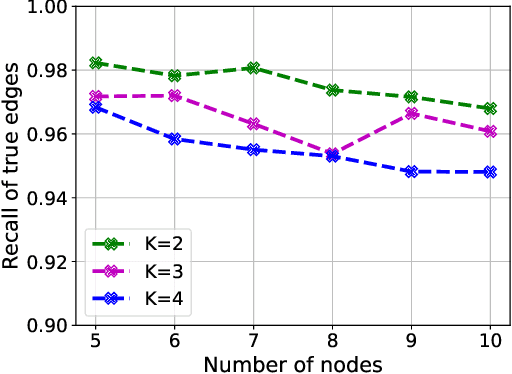
Abstract:Causal interactions among a group of variables are often modeled by a single causal graph. In some domains, however, these interactions are best described by multiple co-existing causal graphs, e.g., in dynamical systems or genomics. This paper addresses the hitherto unknown role of interventions in learning causal interactions among variables governed by a mixture of causal systems, each modeled by one directed acyclic graph (DAG). Causal discovery from mixtures is fundamentally more challenging than single-DAG causal discovery. Two major difficulties stem from (i) inherent uncertainty about the skeletons of the component DAGs that constitute the mixture and (ii) possibly cyclic relationships across these component DAGs. This paper addresses these challenges and aims to identify edges that exist in at least one component DAG of the mixture, referred to as true edges. First, it establishes matching necessary and sufficient conditions on the size of interventions required to identify the true edges. Next, guided by the necessity results, an adaptive algorithm is designed that learns all true edges using ${\cal O}(n^2)$ interventions, where $n$ is the number of nodes. Remarkably, the size of the interventions is optimal if the underlying mixture model does not contain cycles across its components. More generally, the gap between the intervention size used by the algorithm and the optimal size is quantified. It is shown to be bounded by the cyclic complexity number of the mixture model, defined as the size of the minimal intervention that can break the cycles in the mixture, which is upper bounded by the number of cycles among the ancestors of a node.
Facilitating Human-LLM Collaboration through Factuality Scores and Source Attributions
May 30, 2024



Abstract:While humans increasingly rely on large language models (LLMs), they are susceptible to generating inaccurate or false information, also known as "hallucinations". Technical advancements have been made in algorithms that detect hallucinated content by assessing the factuality of the model's responses and attributing sections of those responses to specific source documents. However, there is limited research on how to effectively communicate this information to users in ways that will help them appropriately calibrate their trust toward LLMs. To address this issue, we conducted a scenario-based study (N=104) to systematically compare the impact of various design strategies for communicating factuality and source attribution on participants' ratings of trust, preferences, and ease in validating response accuracy. Our findings reveal that participants preferred a design in which phrases within a response were color-coded based on the computed factuality scores. Additionally, participants increased their trust ratings when relevant sections of the source material were highlighted or responses were annotated with reference numbers corresponding to those sources, compared to when they received no annotation in the source material. Our study offers practical design guidelines to facilitate human-LLM collaboration and it promotes a new human role to carefully evaluate and take responsibility for their use of LLM outputs.
Selective Explanations
May 29, 2024Abstract:Feature attribution methods explain black-box machine learning (ML) models by assigning importance scores to input features. These methods can be computationally expensive for large ML models. To address this challenge, there has been increasing efforts to develop amortized explainers, where a machine learning model is trained to predict feature attribution scores with only one inference. Despite their efficiency, amortized explainers can produce inaccurate predictions and misleading explanations. In this paper, we propose selective explanations, a novel feature attribution method that (i) detects when amortized explainers generate low-quality explanations and (ii) improves these explanations using a technique called explanations with initial guess. Our selective explanation method allows practitioners to specify the fraction of samples that receive explanations with initial guess, offering a principled way to bridge the gap between amortized explainers and their high-quality counterparts.
The RealHumanEval: Evaluating Large Language Models' Abilities to Support Programmers
Apr 03, 2024



Abstract:Evaluation of large language models (LLMs) for code has primarily relied on static benchmarks, including HumanEval (Chen et al., 2021), which measure the ability of LLMs to generate complete code that passes unit tests. As LLMs are increasingly used as programmer assistants, we study whether gains on existing benchmarks translate to gains in programmer productivity when coding with LLMs, including time spent coding. In addition to static benchmarks, we investigate the utility of preference metrics that might be used as proxies to measure LLM helpfulness, such as code acceptance or copy rates. To do so, we introduce RealHumanEval, a web interface to measure the ability of LLMs to assist programmers, through either autocomplete or chat support. We conducted a user study (N=213) using RealHumanEval in which users interacted with six LLMs of varying base model performance. Despite static benchmarks not incorporating humans-in-the-loop, we find that improvements in benchmark performance lead to increased programmer productivity; however gaps in benchmark versus human performance are not proportional -- a trend that holds across both forms of LLM support. In contrast, we find that programmer preferences do not correlate with their actual performance, motivating the need for better, human-centric proxy signals. We also open-source RealHumanEval to enable human-centric evaluation of new models and the study data to facilitate efforts to improve code models.
 Add to Chrome
Add to Chrome Add to Firefox
Add to Firefox Add to Edge
Add to Edge